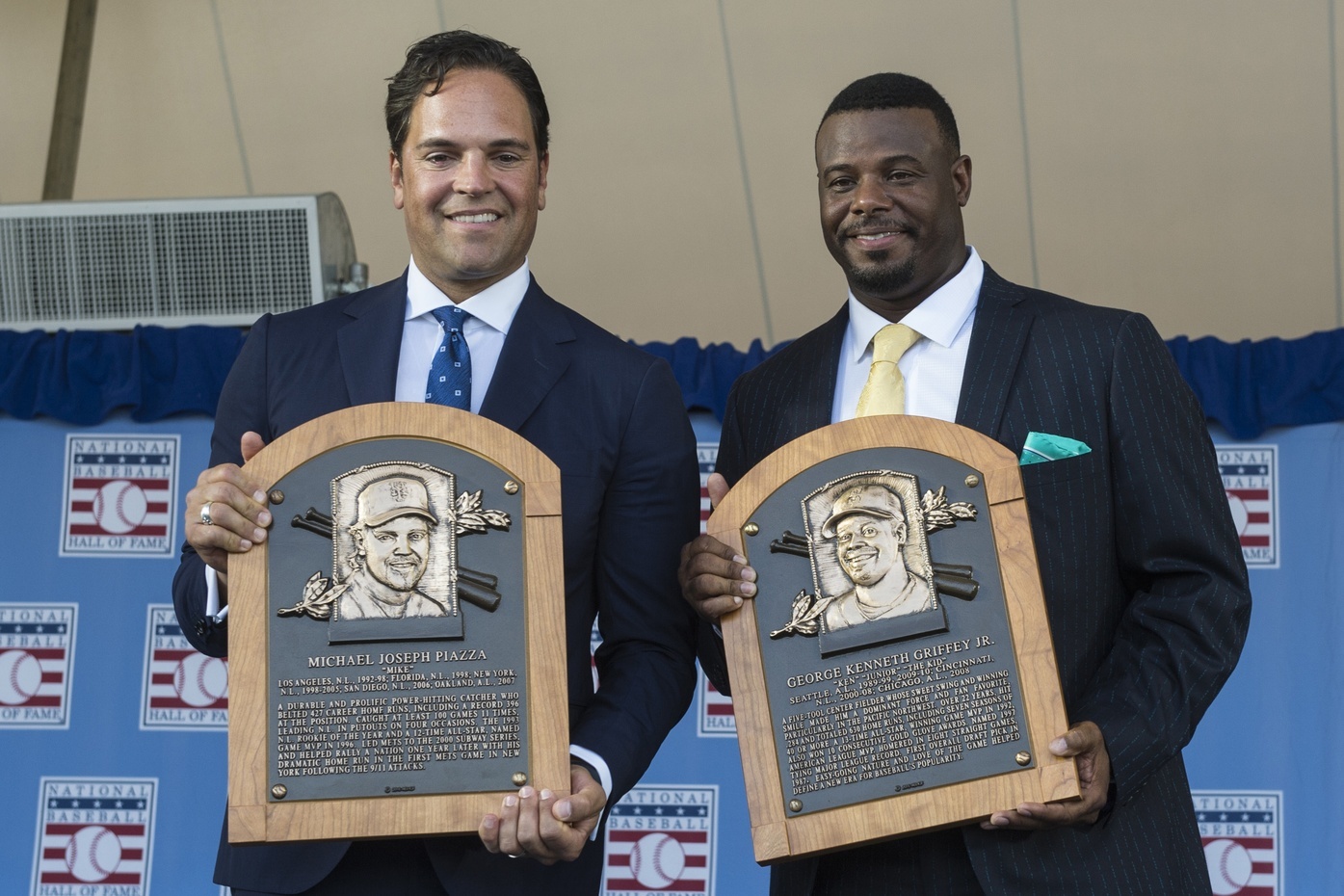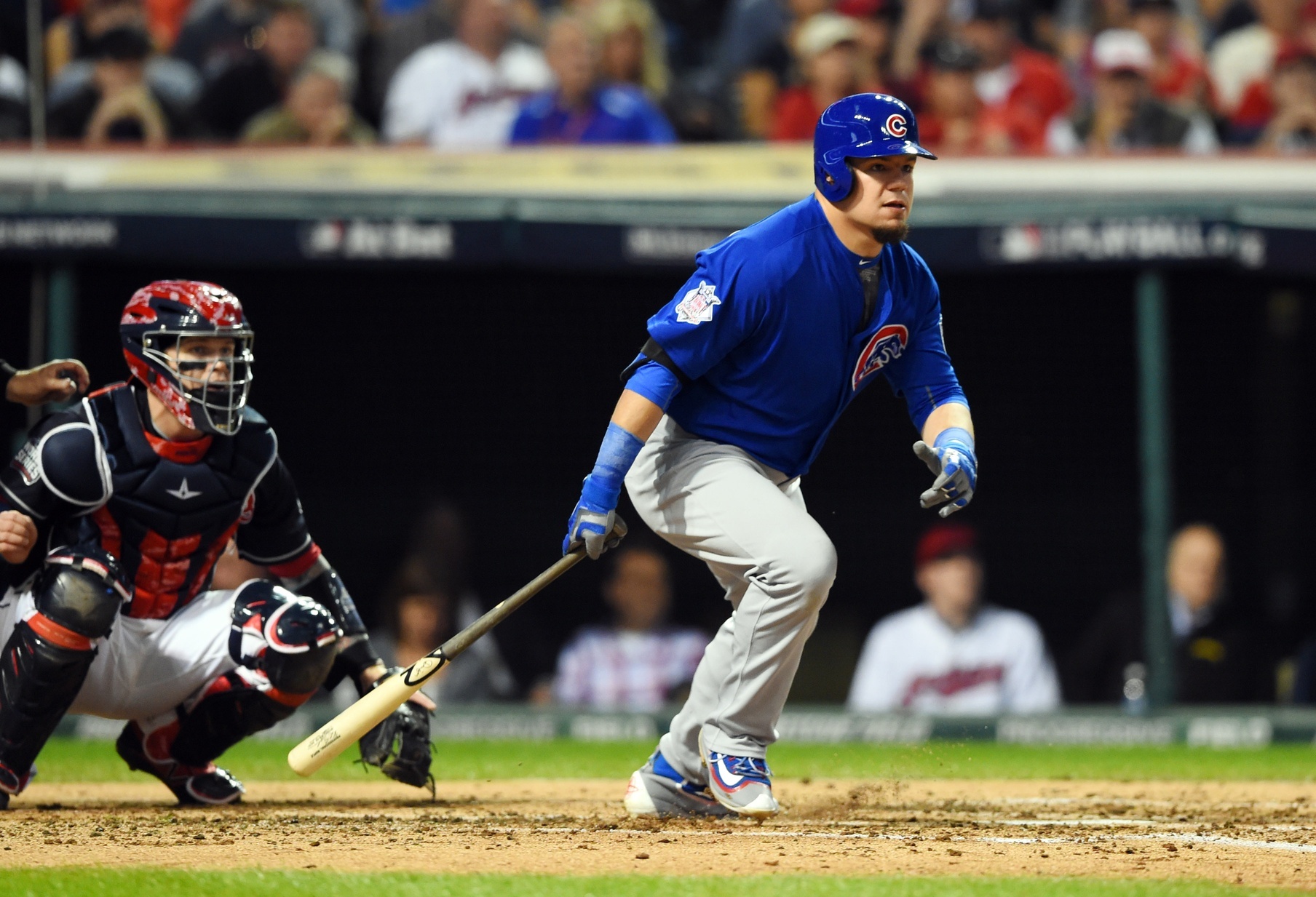This week, the Baseball Writers Association of America will announce who, if anybody, they have elected for induction into the Baseball Hall of Fame. Induction into Cooperstown offers a good excuse to think about the arc of a player’s career—from childhood, to the minor leagues, and finally to greatness at the highest level.
How does a person go from teenage ballplayer to all-time great? For players born in the United States, Canada, and Puerto Rico, it starts with getting drafted. Hundreds of players are selected every year in MLB’s June’s amateur draft. Most flame out. It can even seem like a crapshoot. Last year’s Cooperstown class provided an especially illustrative case study. Ken Griffey Jr. was selected first overall. Mike Piazza was taken in the 62nd round—a round that doesn’t even exist anymore.
Videos by VICE
Read More: Larry Walker Belongs in Cooperstown
Piazza’s case was miraculous. But it’s hard for a player drafted from any round to make the majors. In fact, a recent study by Rick Karcher, a professor of sports management at Eastern Michigan University made waves among baseball people for demonstrating that the percentage of players drafted in rounds one through five who reached the big leagues didn’t differ as much as you’d expect—and the difference between rounds three and five were even slimmer. College players are slightly more likely to reach the majors than high school players. But a third-round pick is still only a few percentage points more likely to reach the bigs than a fifth-rounder.
Studies like this are important, they provide context for all the factors working against a player as they embark on what they hope will be a major league career. But the MLB Draft is not a crapshoot. You can never know beforehand with 100 percent certainty that a player will make the majors, or become a star. But teams do their best to try. The MLB Draft is much more scientific and calculated than you might imagine, for a few important reasons.

One of these men went first overall, the other went 1,390th. Photo: Gregory J. Fisher-USA TODAY Sports
Leverage
In football and basketball—aka the “popular” drafts—you usually see one of two things: The best players go in order of their respective talents, and/or the teams look at a specific need on their roster and take the best player that will fill that position, like a defensive tackle in the NFL or a shooting guard in the NBA. In baseball, we often see both of those strategies avoided, and it comes down to one thing: leverage. In baseball, players have negotiating power after they are drafted.
“You cannot compare our drafts,” an AL scouting director told me. “They are a night and day difference, especially when you’re talking about the [best player available]. In the NBA and NFL, these guys are declaring for the draft. Once the players enter the draft, they lose all of their leverage. You either take the offer, or you sit out for a year and see your stock drop a tremendous amount. In baseball, the best players are usually high school seniors or college juniors. They have the option to go back to school. We have to know that the player is going to sign if we are going to take them early. Obviously we want a talented player, but it’s nearly just as important that we know that we can get the player in the system.
The practice of players going high in drafts based on their projected signing bonus rather than their respective talents is not new. The selection of players like Matt Bush and Matt Anderson, among others, had just as much—if not more—to do with their financial demands as their respective talent levels. Even players like Matt Wieters and Buster Posey who were seen as can’t-miss prospects who played a premium position saw their stock slide because of the high financial figure attached to their signature. It also happened with hurlers like Andrew Miller, and it even reportedly caused the Washington Nationals to have second thoughts on both Stephen Strasburg and Bryce Harper.
“Just look at how the draft went last year,” said the scouting director. “Jason Groome ended up being [the 12th] pick in the draft last year. There’s no doubt in my mind that Groome was the most talented player in the draft. If you asked the Phillies, the Reds and all the other teams picking ahead of Boston to answer completely honestly, I think they’d tell you that Groome was [the top player in the draft]. But, he’s a teenage pitcher, and he wanted big money, so he fell to the middle of the first round. If and when he becomes a star, we will look back on that pick and wonder how he fell that far. Well, that’s why he fell that far.”

Agents like Scott Boras have more to do with who gets drafted where than you might expect. Photo: Kirby Lee-USA TODAY Sports.
The Rules
This ties in with leverage portion, and it’s a little bit arcane: In 2012 MLB implemented a new set of rules that created a bonus pool that limited the amount of money teams can spend on their selections. This has changed how teams approach the draft.
“It’s made it even more scientific than ever,” the scouting director said. “And everything said about needing to make sure you can get the guy is all the more true. If we don’t sign our first or second round pick, we lose that money. If we lose that money, we can’t sign guys for over slot [every draft pick is now given a financial value, and teams cannot go over 110 percent of the cumulative total for the first ten rounds] without giving up picks the next year. It’s a vicious cycle if you really think about it.
“And that’s why the scouting portion becomes even more important. If we have a guy that we know can play, and we know we can get them significantly under slot in round three or four, we can take more chances not only in the first round, but in the middle rounds as well. If we know we’re getting a $50,000 dollar player in round four, and a few $10,000 dollar players in rounds eight through ten, we know we can go way over slot in some of the other rounds. Those guys who slipped because of signing concerns now become in play for us because we know we got an unheralded guy in the system. It’s all very calculated and complicated, but gosh it can make a big difference in filling out a class.”
Scouting
Once upon a time, the scouting process consisted of old guys in straw hats carrying stopwatches and radar guns. That might still be true to an extent, but technology has also changed the way teams evaluate the physical tools of prospects.
“I don’t think there’s any question we’ve gotten better at analyzing players,” the scouting director said. “We know what we’re looking for now. There’s more time spent worrying about things like bat speed, velocity, speed, projection in the body, stuff like that. There’s less time spent worrying about the frivolous stuff like confidence or the stuff you saw scouts argue about on Moneyball.
We also have more technology, and we are getting more looks at these players over the season as well. I think in previous days we spent too much time emphasizing how the player looked on first glance. The more looks you get at a player, the less likely it is that you’re going to miss on flaws or strengths.”
And before you poopoo it, just look at the quality and quantity of picks that have made impacts over the past couple of years in a short amount of time. Kris Bryant, Alex Bregman, Aaron Nola, Kyle Schwarber, Carlos Rodon, Dansby Swanson and many more have all made significant contributions, and have done so with very little minor league seasoning. Some of that has to do with player development, but in order to develop those players you have to get them into your system in the first place.

Kyle Schwarber didn’t need much seasoning in the minors. Photo: Tommy Gilligan-USA TODAY Sports.
No draft is ever going to be an exact science. Player development is always going to be difficult to predict, and when you consider that players selected in the MLB portion of the draft are between age 17-21, and usually a long way from big leagues, the volatility becomes even more real.
There are also always going to be teams who do a better job of developing talent than others. The reason the Red Sox have and had a better farm system than a team like the Mariners isn’t just because they have better scouts; they also have some of the best coaches and a much better player-development infrastructure. If the draft was an exact science, it wouldn’t be any fun to cover, we’d just report on who went where and tell you what they’re going to become like a video game. But if it was a crapshoot, you would see more Mike Piazzas.
The truth is, there’s far less randomness than you might anticipate. And the difference between a third-round pick and a fifth-round pick might have less to do with talent level and more to do with not-strictly-baseball factors like leverage. As technology and statistical analysis improves, it’s becoming easier and easier to predict which players will make it. You just have to to know where to look if you want to see those calculations being done.
More
From VICE
-

Ricky Havlik/AEW -

Illustration by Reesa -

Screenshot: Sony Interactive Entertainment -

Screenshot: EA Sports BIG
